Shouting dolphins and failed rocket launches
The artificial pancreas to turnaround diabetes control, what went wrong with the UK’s first space launch, and the Cambridge-born process that can turn CO2 and waste plastic into fuels and valuable chemical raw materials…
In this episode
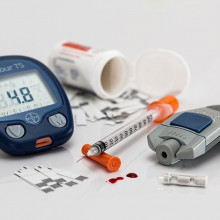
00:54 - New artificial pancreas for diabetics
New artificial pancreas for diabetics
Charlotte Boughton, University of Cambridge
There’s some good news for the millions of people affected by type 2 diabetes, the condition that leads to high blood sugar levels that can damage eyesight, blood vessels, nerves and our kidneys: researchers at Cambridge University have shown that an “artificial pancreas” - that keeps tabs on blood glucose and automatically administers the sugar-lowering hormone insulin - can keep the blood glucose levels of type 2 diabetics in the “sweet spot” associated with best health outcomes. Charlotte Boughton from the University of Cambridge has been working on this project…
Charlotte - An artificial pancreas, or a closed loop system, is made up of three separate devices or pieces of hardware. People using the system wear a continuous glucose sensor, which is about the size of a 50p piece and they wear it on the arm or on the stomach. And that sends information about somebody's real-time glucose levels to an computer algorithm, which, in our system that's been developed at the University of Cambridge, is an app on a smartphone. And that then calculates the amount of insulin that's required to keep the glucose in the target range and communicates that automatically to an insulin pump, which is a small device that people wear usually attached to the stomach or legs or arm.
Chris - And who did you test this on this time? Because this technology has been used in people with type one diabetes who normally inject insulin to control their diabetes. This has been tested on them before, so what's the difference here?
Charlotte - Yeah, absolutely. So it's been a big news week for people with type one diabetes and NICE have released their guidance for who should be given access to artificial pancreas technology for people with type one. But as you say, our study was one of the first studies using similar technology to that that's been used before for people with type two diabetes who need insulin, which is about a third of people with type two diabetes. So we included people with type two diabetes who use insulin therapy who come to either clinic at Addenbrooke's Hospital or from a local GP practice in and around Cambridge. And the main difference between the system that we used in this study is that for people with type one diabetes, every time they have a meal or a snack, they actually need to tell the system what they're eating and how much insulin to give. They're often called hybrid systems, whereas this system is fully automated so the person wearing the devices doesn't need to do anything to tell the system they're having a meal or anything. So the whole system is completely automated, which makes it much easier for people to use.
Chris - What did you compare with what?
Charlotte - So we compared the closed loop system with their current insulin therapy that they use day to day and we measured how long they spent with their glucose levels in the recommended target range over eight weeks. So they wore the devices at home, carried on with their work, their daily lives, and we compared the glucose control between the two periods and we found that, when they were wearing the closed loop devices, they spent twice as much time with their glucose in the target range as when they were using their current insulin therapy. So much better glucose control with the closed loop system.
Chris - And in that respect, of course the patients are being their own control, aren't they? Because you are asking them to do this and then don't do this or don't do it, then do it. And so you are comparing apples with apples here to see how their lifestyle fits in with this machine.
Charlotte - Exactly. And it means everybody has a chance to access technology so we have more people using it. So we have a better idea that it works for more people with different challenges and also the safety as well.
Chris - Do you think this is gonna become widespread in terms of this will be the go-to way to manage type two diabetes in future?
Charlotte - Yes. I think if our aim is to reduce the risk of long-term complications of diabetes, then this is a reasonable step towards doing that. So we hope that it'll improve access to this technology for people with type two diabetes.
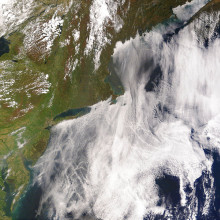
04:52 - Failed launch from Spaceport Cornwall
Failed launch from Spaceport Cornwall
Excitement had been building for the first launch from Cornwall’s new space port; it was a UK first but sadly its first mission ended in disappointment: Virgin Orbital, owned by Richard Branson, had repurposed one of his old passenger 747s into a customised aircraft carrying the LauncherOne rocket carrying a payload of satellites destined for Earth orbit. But they never reached their destination. Blaming “an anomaly”, Virgin reported that the rocket had failed to deploy its cargo, which had burned up over the ocean. Space journalist and presenter of the Space Boffins Podcast Richard Hollingham was following the events closely. James Tytko asked him what went wrong…
Richard - The short answer to that question is we don't know yet what happened, but as you say, it was all building up to what we thought was going to be a success. I've been down there to Spaceport Cornwall, and it's an impressive operation. They got the Goonhilly ground station, which is being used to track the satellites, and then Virgin Orbit turn up, everything seemed to be going to plan, aircraft takes off, the rocket drops from the aircraft as intended, the first stage of the rocket fires. Then, it's not clear. Looking at the trajectories, it seems that the second stage of the rocket also fired, but then things went wrong and we don't know what went wrong. Fortunately, it looks like everything's insured, so although it sets things back, it will happen and it will happen again.
James - Well, that's obviously disappointing, but what you are saying there is cause for some promise, I hope. How long before the UK Space Agency can dust itself off and go again - rebuild and relaunch those satellites? Must take a fair bit of time, I assume?
Richard - Well, they're talking about a year. These satellites are only around the size of a shoebox. All the different missions that were packed into this rocket, yes, they can build them, rebuild them in a matter of months. You've got to have the testing and all the rest of it. So I would say a year would be optimistic. And it also depends on whether there's any fundamental problems with the rocket. There shouldn't be because this is a proven system, albeit a new system. But if there's some fundamental issue and there needs to be a redesign or whatever, there's a lot of moving parts here. So I think a year for this particular launch, for launch from Spaceport Cornwall, is probably optimistic.
James - And those satellites that were attached to the rocket, the whole point of this mission in the first place, which scientists in particular were there waiting to use the data collected by this equipment? Do they just sit there, twiddling their thumbs now until we are good to go again in the year timeline that you've suggested,
Richard - All the satellites on board, they were small satellites, and the UK is genuinely a world leader in building small satellites. They were all tech demonstration satellites. One by Welsh company, Space Forge, for example, it was a test of their satellite concept, and the idea was to be able to return satellites from space, which would be pretty amazing if they can do that. One of the satellites that I went to see, which was being built in Oxfordshire, I went to see that just before it was shipped down to Cornwall, and when I say shipped down to Cornwall, they stick it in the back of a car and take it down to Cornwall, that's the beauty of building and launching from the same country. That one was an investigation of telecommunications and GPS signals. So a lot of experimental satellites, a lot of things that could lead to other bigger projects, but all small teams, all small companies. So you really feel for these people and a lot of them are young, enthusiastic engineers. This is probably their first satellite as well. And you've got to see the big picture. And the big picture is in maybe 18 months time, hopefully those satellites will be in space. They'll be the mark two satellites and all this would've been forgotten. It will be a success. Ultimately, this will happen again.
James - You've preempted my coming onto a more positive footing to ask you whether, Spaceport Newquay, despite this failed launch, is a sign of things to come in terms of the UK's involvement in space science.
Richard - Let's be clear, the UK is a leader in some aspects already. The UK is a major manufacturer of satellites from the massive telecommunications satellites in high geostationary orbit around the earth, to small satellites, to scientific satellites. It's one of the major funders of the European Space Agency. We're about to have new astronauts for the UK. So, you know, the UK in space is doing pretty well. This was the missing part of the jigsaw really, to be able to do launches. You can design the satellites, build the satellites, and then launch the satellites. There's maybe a commercial advantage, long term, but also a strategic advantage that you're not relying on other countries to do this. So Spaceport Cornwall, there will be a successful launch from there, I have no doubt. There are also two other options coming up in the next few months. Vertical launches - conventional rockets - from Shetland Islands and also Sutherland, so very far North of mainland Scotland. Both those space ports are being built now. So there will be a launch from the UK in, let's say the next 18 months, couple of years. It will happen.
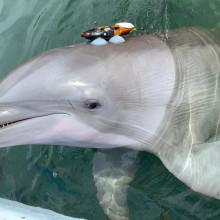
11:19 - Dolphins shout to each other over loud noises
Dolphins shout to each other over loud noises
Pernille Sørensen, Univeristy of Bristol
Many animals rely on sounds to communicate; but we invade their habitats we generally make a noise, which has the potential to be highly disruptive, particularly in habitats like the oceans where sounds travel a very long way. To find out how animals are affected and to what extent they can compensate, a team at Florida’s Dolphin Research Centre watched as pairs of dolphins were tasked with pressing buttons at either end of their lagoon within a second of each other to get a reward. The animals had to “talk” to each other underwater to coordinate their button pushes, and the team recorded these vocalisations to see how the animals responded as the task was made more and more difficult by playing noises from an underwater speaker. The dolphins upped their game, “shouting” to overcome the din and turning to face each other underwater, but their success rate still dropped significantly as Will Tingle heard from Bristol University’s Pernille Sørensen…
Pernille - Before diving into the study, what we already knew from studies on wild animals was that animals are able to compensate for noise by using different strategies to accommodate for noise. However, up until now, we've only looked at this at the individual level, whereas what we wanted to investigate was how noise impacts animals working together And basically look at the whole communication network. Is a receiver able to receive the sound from a sender when noise is impacting them? So we set up to test this with the dolphins and what we found, what they tried to compensate by both increasing the loudness of their sounds and they also increased the duration of their calls. But despite the use of these compensatory mechanisms, we still saw that they were less successful in performing this cooperative task. All of these different noise treatments that we exposed them to actually all impacted the dolphins ability to communicate during this task a little bit. It was kind of like the higher the noise got, the more they were impacted. So we saw the biggest difficulties for the dolphins in the very high noise treatment, but also in the high noise treatment tasks.
Will - To bring this out into the wider world. Globally speaking, there's a huge number of marine vessels and boats in the world. Some estimates put them at 3 million pleasure vehicles and all these boats on the water have an effect on cetaceans like whales and dolphins in that it's a very loud noise for them. So there are dolphins and whales out there that perhaps are trying to communicate but are being blocked off, particularly in heavy shipping routes by these loud noises being made by marine vessels. So does this study have ramifications for wild species as the number of marine vessels continues to increase?
Pernille - Yes, I think it could definitely have implications for wild animals. Our findings clearly highlight that we need to account for how noise may affect animals that work together in the wild. So up until now, what we have known a lot about is that lots of animals throughout both marine and terrestrial habitats are able to perform these compensatory mechanisms in response to noise. But what we didn't know was how well those compensatory mechanisms actually worked. So this is what our study really shows, that it does have an effect of animals working together and they are less successful when noise is present. And because cooperation is common, not only in dolphins, if noise directly makes animals in the wild less efficient at working together, such as when they're performing, for example cooperative foraging, then this could really have important negative consequences not only for the individual but even at a population level.
Will - I spoke to someone on another dolphin study recently who said that the degradation of dolphin habitat would cause a reduction in the complexity of dolphin behaviour as they have less time to interact socially if they need to spend more time finding food. Language is a very complex behavior. So could we see the same thing happening here in parts of the ocean with an increased volume?
Pernille - I think that's a really interesting thought. Especially, you know, you can imagine even with us, if we are trying to communicate something to friends in a noisy environment. We might think that okay, actually maybe I need to reduce the complexity of this message because otherwise they won't understand what I'm saying. So I think that's a very interesting thought that maybe animals in the wild might similarly have to reduce the complexity of the message that they're sending on to friends in the environment simply because they cannot get the message through if they don't. I don't know if that's gonna happen, but you could imagine that there might definitely be a change in how animals work together and they need to adapt in order to continue doing these behaviors.
Will - Obviously dolphins have a complex language, but do you think there are other organisms that potentially might suffer the same consequences?
Pernille - Yeah, absolutely. Within marine mammals, we definitely see cooperative behavior across different marine mammal species. But a lot of studies have also focused on songbirds and we know that birds that live closer to very busy roads do actually call louder in order to hear each other there compared to the same species further into the woods or forest where they're not disturbed in the same way. They already show this kind of compensatory mechanism. So yes, absolutely. Other animals that are trying to work together in certain ways. I'm sure we would be able to find evidence that they would also be having issues like we see it with the dolphins.
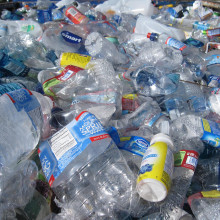
16:37 - Turning plastic and CO2 into fuel
Turning plastic and CO2 into fuel
Erwin Reisner, University of Cambridge
We’re often covering the topic of climate change here on the Naked Scientists with justifiable cause for concern. But this next item could be a reason to celebrate. Cambridge chemist Erwin Reisner has developed a system that can use sunlight to transform plastic waste and greenhouse gases into sustainable fuels and other valuable chemicals…
Erwin - My laboratory really develops technologies that can use sunlight to convert waste into useful products. So about 10 years ago, we started work on using the greenhouse gas, carbon dioxide and developing systems that can convert this into fuels. And more recently, maybe five years ago, we started work on converting plastic waste into useful products and chemicals as well. And now for the first time we managed to combine these two approaches where we have a single solar powered reactor where we can feed in plastic waste and carbon dioxide and really make useful fuels and products.
Chris - Talk us through the nuts and bolts of this then. So the solar bit of it is the energy input because nothing happens. There's no free lunch in the universe is there? You've got to supply energy to make things happen. So that's powering the process. But what is the process?
Erwin - That's correct. We only use sunlight, the most abundant energy form on our planet. And the process is really a reactor that consists of two compartments. In one compartment we feed in the plastic waste. In our case, for example, we use plastic bottles, which is PET waste, that can convert PET to glycolic acid. And in the second compartment, we bubble carbon dioxide and convert it into fuel components, which are known as syngas, carbon monoxide, and formic acid. This sounds very technical, but it's a very interesting intermediate chemical that we can then further convert to interesting fuels that can be useful.
Chris - How does the sunlight work then? Is it converted into electricity that powers that process or is it the heat or is it ultraviolet to split some of the things apart and give them energy? How do you use the sunlight?
Erwin - That's an excellent question. So we use solar energy directly to drive the chemical reactions. We do not really produce intermittent electricity. This is an integrated approach where the sunlight is directly used to drive the chemistry.
Chris - In essence then you need a sunny day. But what is there some kind of reacting surface where the sun comes in and does something to that surface that makes it able to modify these chemicals in this way?
Erwin - Yes. So a sunny day helps a lot. It also helps to have a close and sunnier climate.
Chris - Not gonna have a lot of luck with that at the moment.
Erwin - In the UK, it's still okay. <laugh>. So essentially yes, we do need an area where we take the light, where we harvest the solar energy and then the chemistry takes place, but the light harvesting and the chemical conversion happens at the same place.
Chris - How would this work practically then? Would you imagine that you've got the equivalent of what we see for a solar farm would be a chemical recycling farm in your hands?
Erwin - This is our ultimate dream to build a solar power recycling upcycling facility. And this would mean we will certainly have large areas where we need to collect sunlight. This could either be a hundreds of square meters or square kilometers array of solar reactors, or we take solar energy and sunlight and concentrate on smaller reactors that we can do the chemistry with.
Chris - One has to take into account when doing any of these kinds of analyses, the sort of circular economy, which is that the plastic doesn't get itself to the recycling plant. The CO2 doesn't harvest itself from the atmosphere and feed itself into your system. So when you do those sorts of calculations, does this still make sense? Is it viable? Is it actually a carbon saving? We're not burning loads of diesel to get the plastic to your plant to do this?
Erwin - That's a very important point. So for us, this is very early stage technology. This is really just what we would call a proof of principle to say this actually is feasible and viable. To address exactly your point, we work quite closely with recap, that's the Peterborough and Cambridge Waste Recycling facility. And we have been at Amey, the waste treatment facility, for example, in Waterbeach to collect samples and even inspect the facilities to see where, how we could integrate this technology with existing waste recycling. So we would do this technology onsite where we accumulate the waste. And in addition we have to think about carbon capture as well. So we are also working on technologies where we can really take carbon dioxide, either from industry or even capture from air and use this as an input to drive the reactor.
Chris - When you say use plastic, presumably you're not just chucking plastic bags in there. So do you have to put the plastic into some kind of configuration first so that the process can consume it?
Erwin - So, yes and no. So ideally a strength of our system is we can use quite a broad range of plastics. So when we talk about plastics, it's not one product. We really talk about hundreds of different products.
Chris - Well you preempted my question, because I was thinking when we look at what goes in the bin. Even in the recycling bin, it's a whole mixed bag of plastics isn't it?
Erwin - So with our systems, we can convert a good range of plastics, which are known as condensation polymers. So this is PET, PLA, and other types of plastics. And the process also works with biomass, which is actually really attractive because if we have contaminated food waste, for example, we can use this straightaway in our process and do not need to worry too much about, purifying the waste stream process
Chris - So it's not going to gum up the waste stream.
Erwin - So it's a very versatile, robust process.
Chris - Yeah. And what's the secret ingredient that makes this happen? What is the surface over which there must be some kind of catalytic process that's driving this. What's the secret to that?
Erwin - So exactly. So the solar energy provides the energy and then we need the catalyst, these materials that can really accelerate these chemical reactions. So in this case, we try to develop surfaces that can really then take the waste streams, rearrange bonds, and make this interesting product. So in our case, this would be based on copper for example, or cobalt, which are quite abundant materials that are possibly scalable.
Chris - I mean expensive, still, because everything's become expensive, hasn't it? But certainly that you're not talking about really rare materials which many of these other processes have to use.
Erwin - Yeah. So this is one of our core concerns. We try to avoid precious metals and expensive components that could not be scaled in the longer term future.
Chris - So just to finish, what are the figures looking like? I mean how much could you convert with a process like this? Is it meaningful? As in, we know the world makes millions of tons of plastic every year. Can you deal with it with this?
Erwin - Yeah so we hope with our work to inspire and to show what's technologically possible. To really make this a meaningful process this will mean multimillion investments from companies, government, stakeholders to really get to the scale stability and efficiencies that are being needed. So for now, to give you a scale, we work in our laboratory on a milligram maximum gram scale. But as you said, of course we have produced probably 10 billion tons of plastic since the fifties. So there's still some scale up that is required in the next couple of years.
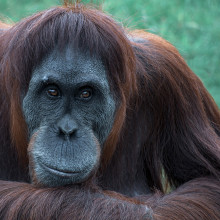
23:19 - Apes can make irrational choices like humans
Apes can make irrational choices like humans
Penelope Lacombe, Université de Neuchâtel
Gambling is something that most of us do in our daily lives. This doesn’t necessarily refer to monetary gambling, although 44% of adults in the UK have done so in the last 4 weeks, but deciding to cross a busy road or deciding you know better than the satnav becomes a form of gambling when one decides to take a risk. This sort of economic strategy, measuring the cost of the risk against the benefit of the reward, is very human. But is it exclusive to humans? Will Tingle reports…
Will - Humans are generally speaking risk averse. Given the choice, we are more likely to pick a safe option than a risky one. If someone was given a choice between a set amount of money or a mystery amount, that could just as likely be double or nothing at all, the majority of people would stick with what they had. But is this an inherently human trait or something that we share with our relatives? Penelope Lacombe, from the Université de Neuchâtel wanted to find out. But first the question was - how do you get the ape subjects to play along?
Penelope - Food. Food, either fruit like a grape or vegetables like carrots or beetroots.
Will - So, once the gorillas and orangutans were on board with the game, did they stick or twist?
Penelope - In this kind of experiment, yes. Like humans, they preferred a safe option. They did not want to take a chance, so they preferred the stable and safe pieces of food.
Will - So apes do match human's risk averseness in this particular setup. However, there are instances in which the framing of a situation makes people more prone to take a risk. If there's a tray with multiple cups, one of which has a larger reward under it, then the average person is more likely to risk their safe option. And it appears our primate relatives are the same.
Penelope - In this experiment, the apes were risk prone. They wanted to bet. So in the other experiments there was not a mystery box, it was a tray of boxes and the apes knew that under one of these boxes there was the reward. So they knew the reward and they knew the probability to gain it. For instance, there were two risky cups and they knew that there were eight pieces of grapes under one of the two. So they also had a 50% chance of winning. But it was not presented exactly in the same way. And in this case, they wanted to bet.
Will -
The second setup shows that apes like humans can make irrational decisions based on their previous biases. Decision making is context dependent and, once they know the rewards are high, they are more likely to try and take a risk. So why is this?
Penelope - There are different hypotheses. The first one is that they wanted to explore more cups to explore and that could drive an exploration bias. They are curious, so they want to understand what's going on. So if there are more cups, maybe they will want to explore more. That is one of the hypothesis we had. Another one is that, in this case, they knew that the reward was somewhere, so this could also make them more impulsive. They knew that there was food under one of the cups, so I have to try, I have to try it and find it. Whereas with the mystery cup, maybe there is nothing under it. So that could drive less betting behaviour.
Will - The knowledge that there is a definite reward somewhere out there was enough to drive these apes to take a risk more often than if the existence of a reward wasn't certain. And as with all gambling, part of the bet is the regret.
Penelope - Apes are a sore loser that do like to lose. And well that was one aspect of the research that we wanted to test. Are they more annoyed when they're losing food in either one of the experiments? That could also give information that could be interesting. So we filmed them to see how they react to losing a bet, and very often they try to whip us with the sticks that they had in their enclosure, or spit on us, or they just left and quit experiments. That was something that we observed frequently during the experiments. And it's also interesting to see that they are very committed in the bedding process. They do not like to lose and they express a whole variety of behaviour that show that.
Will - So there you are. Gambling - it's no monkey business.










Comments
Add a comment